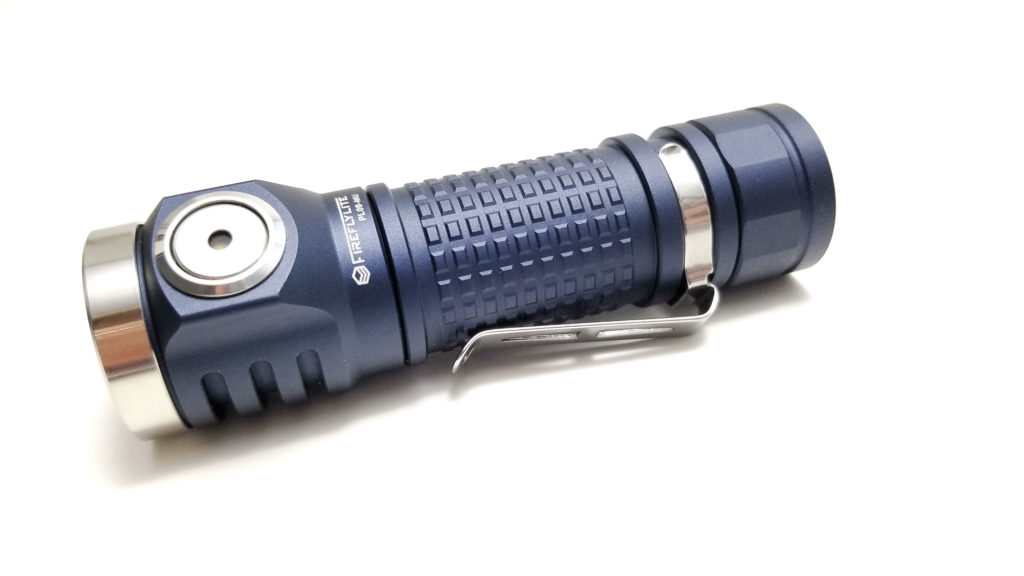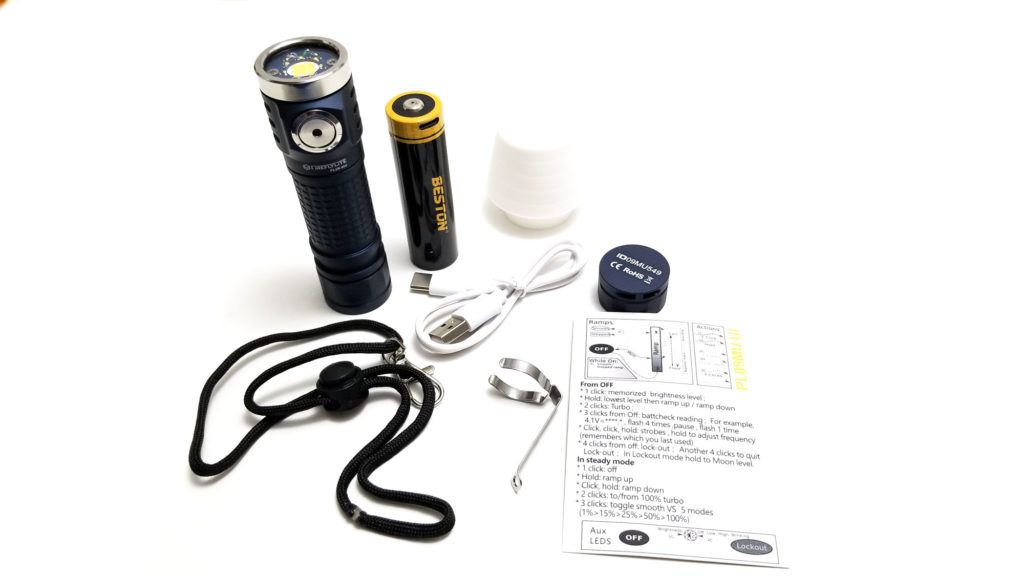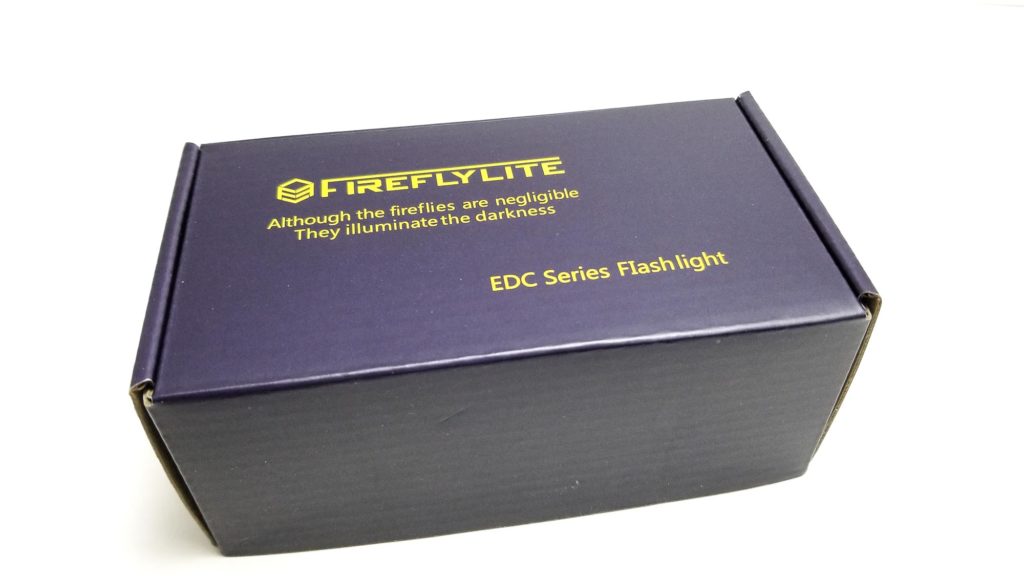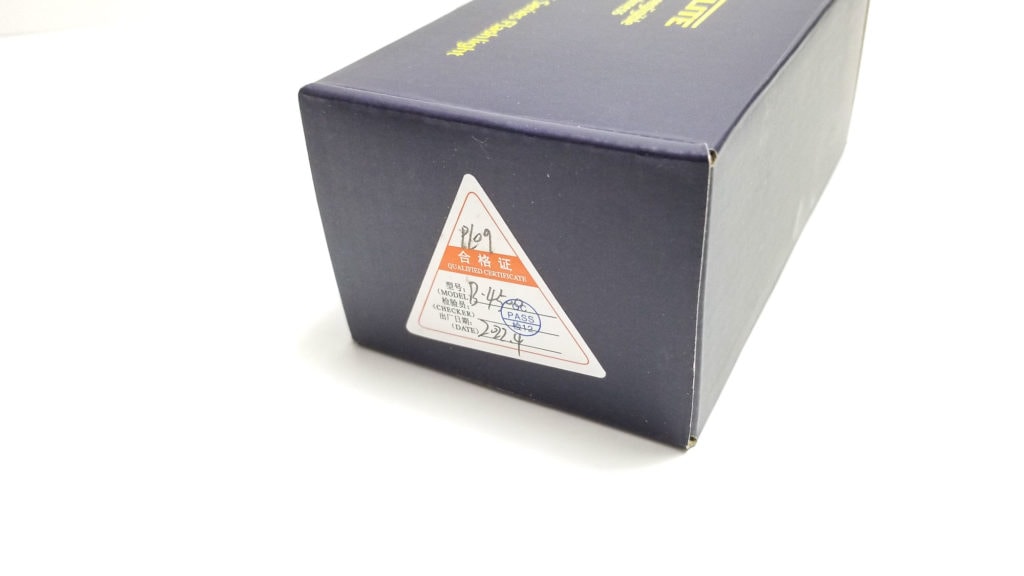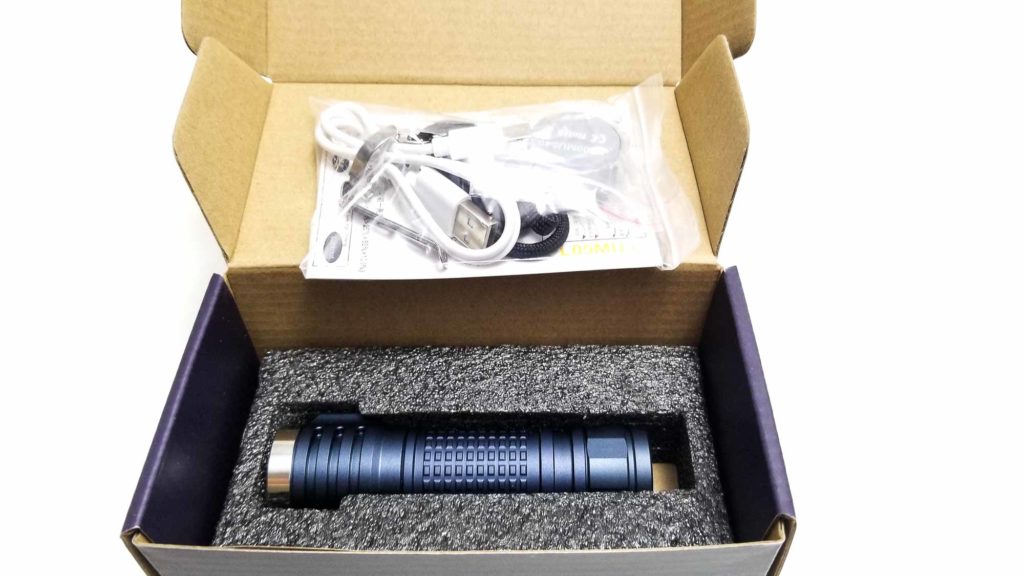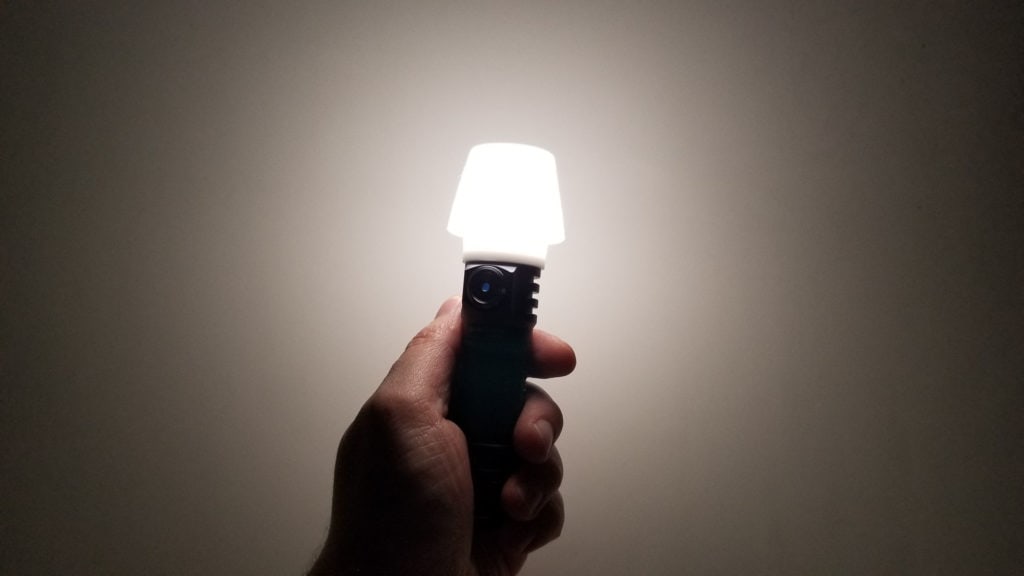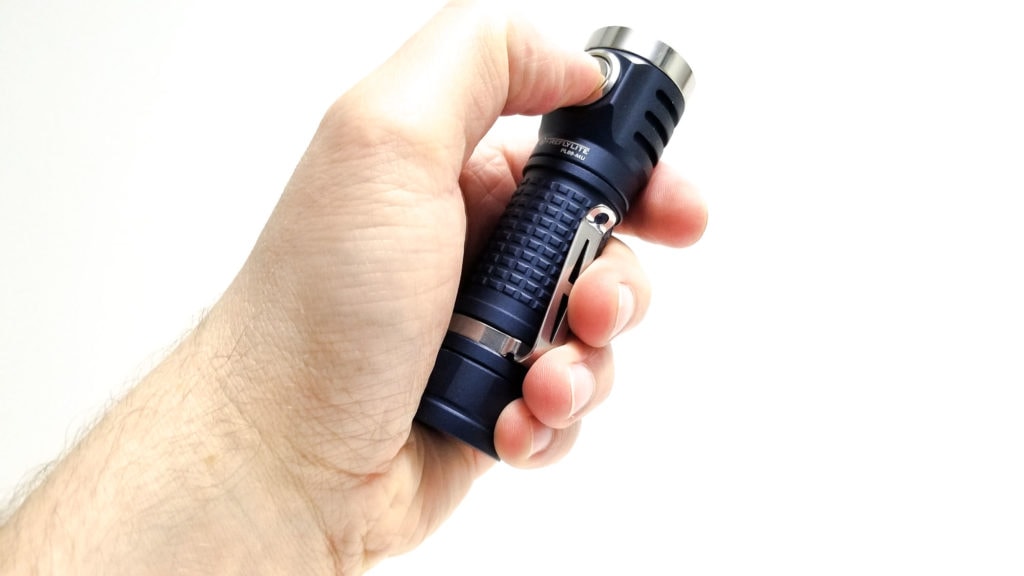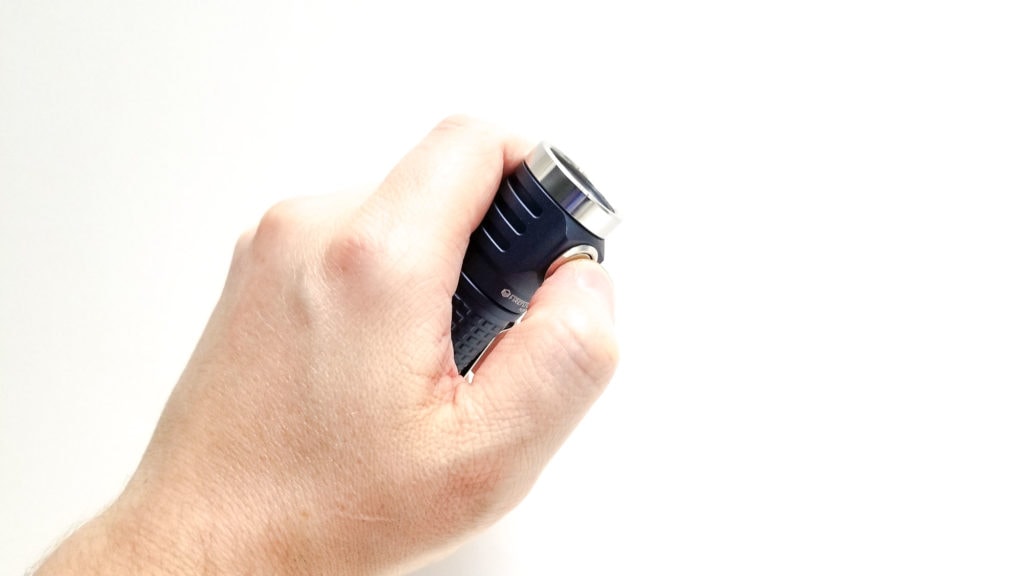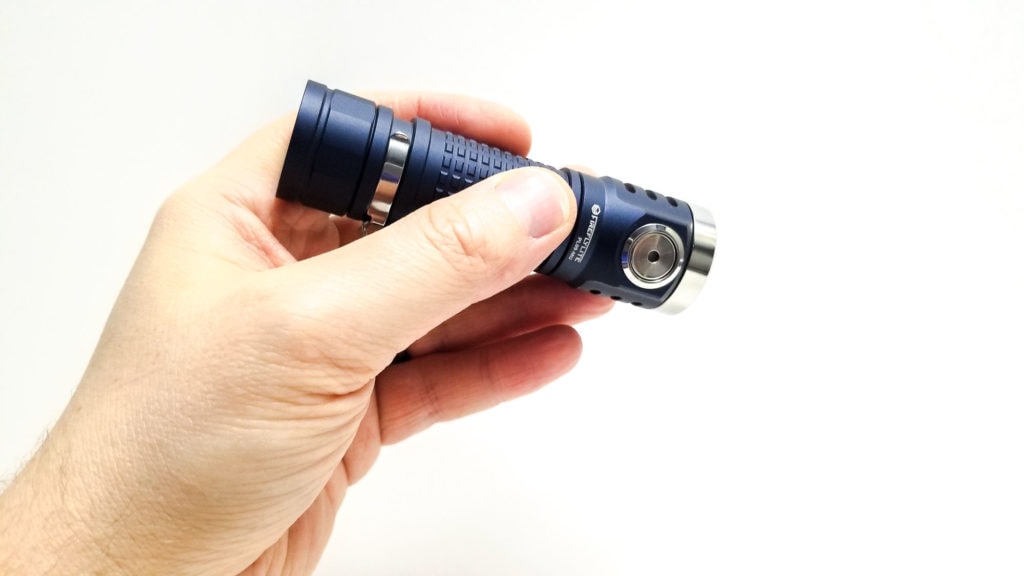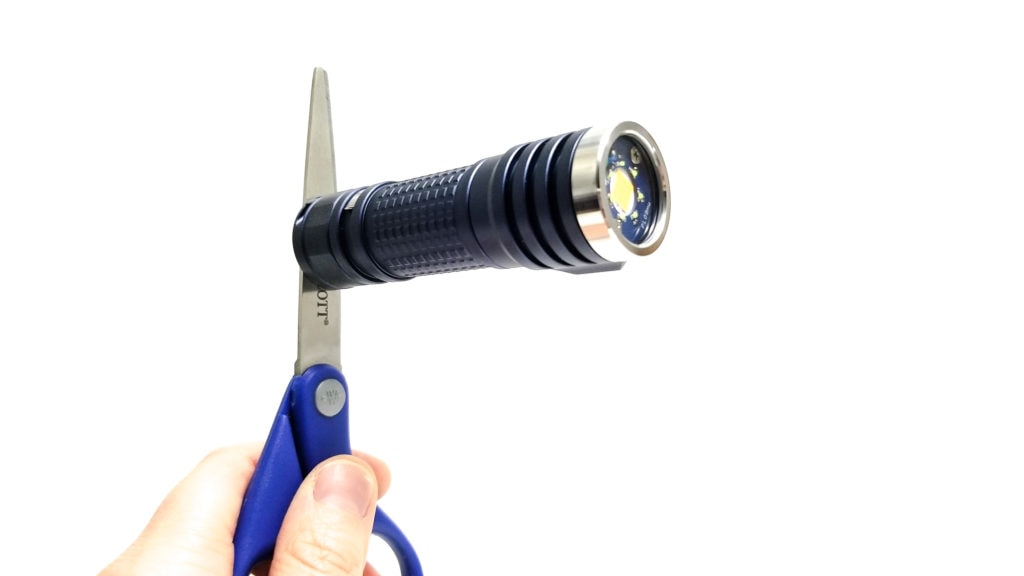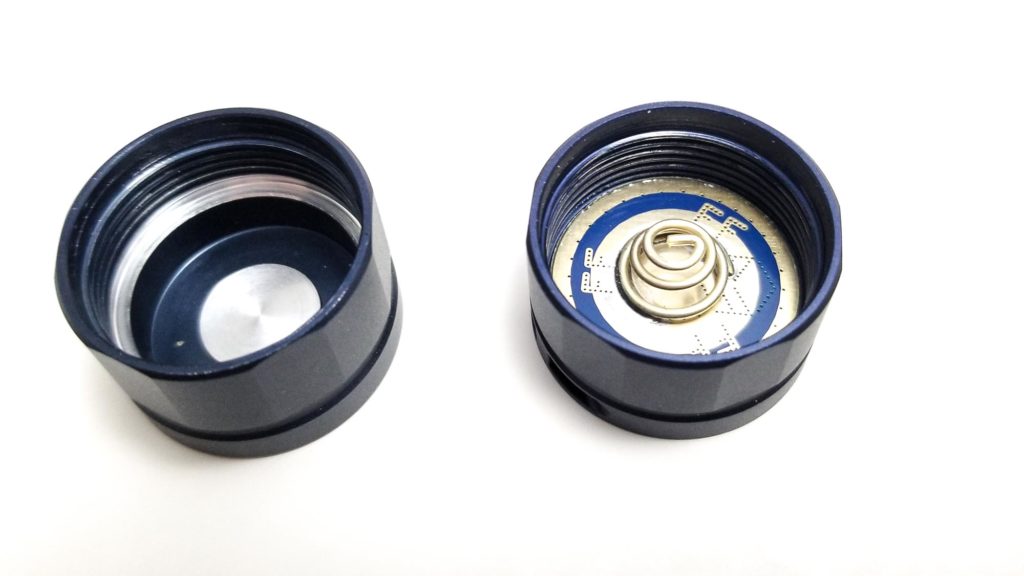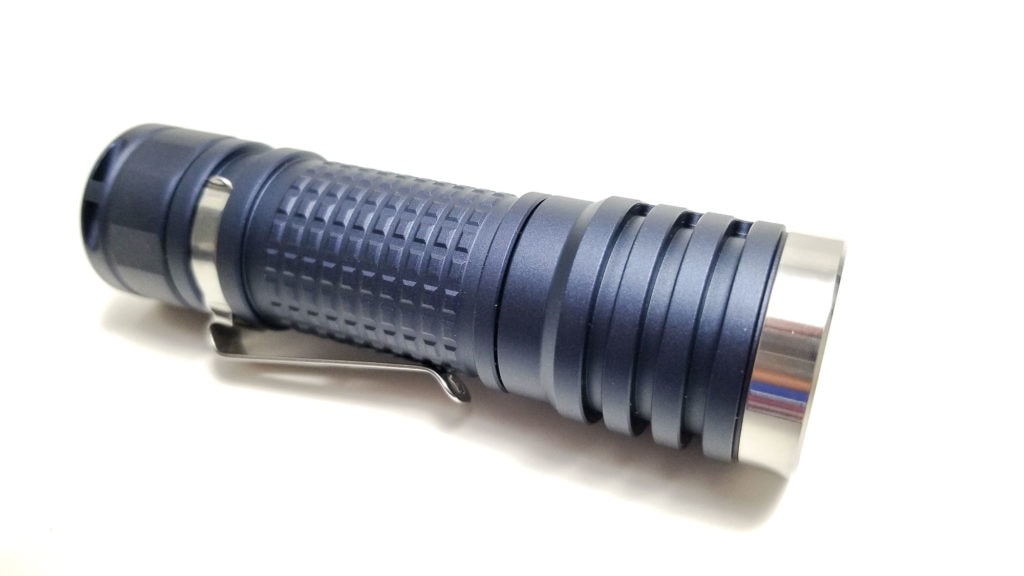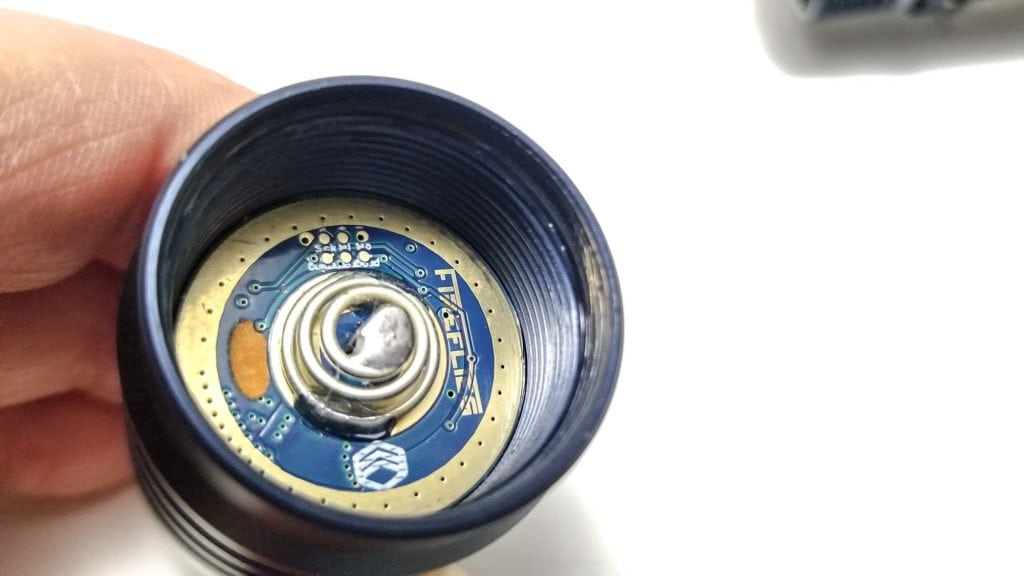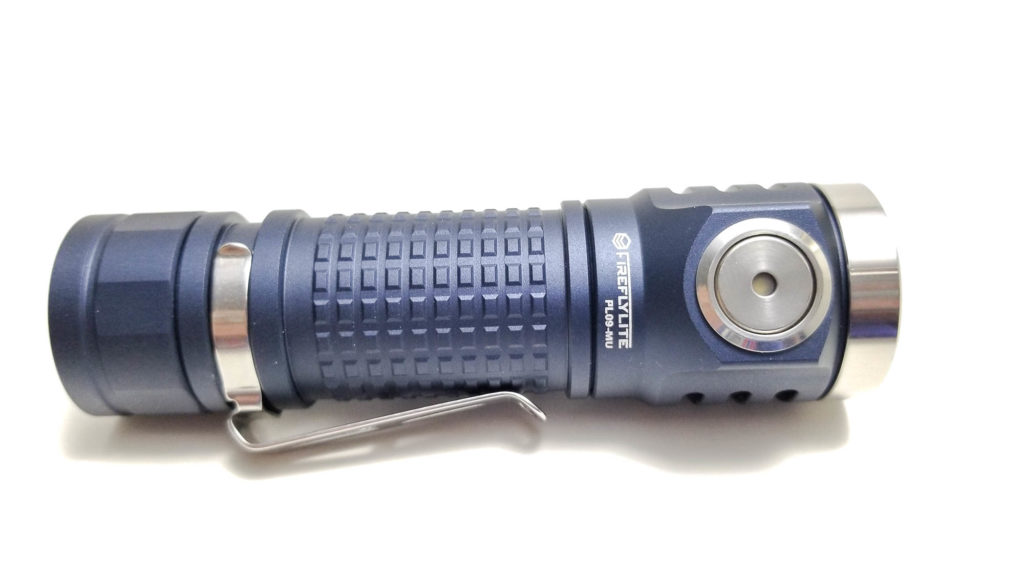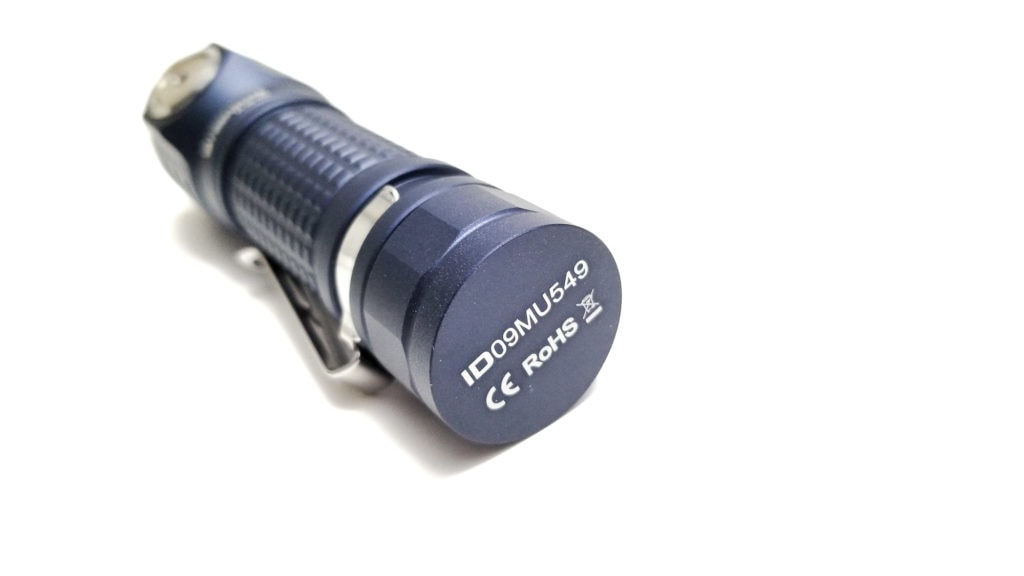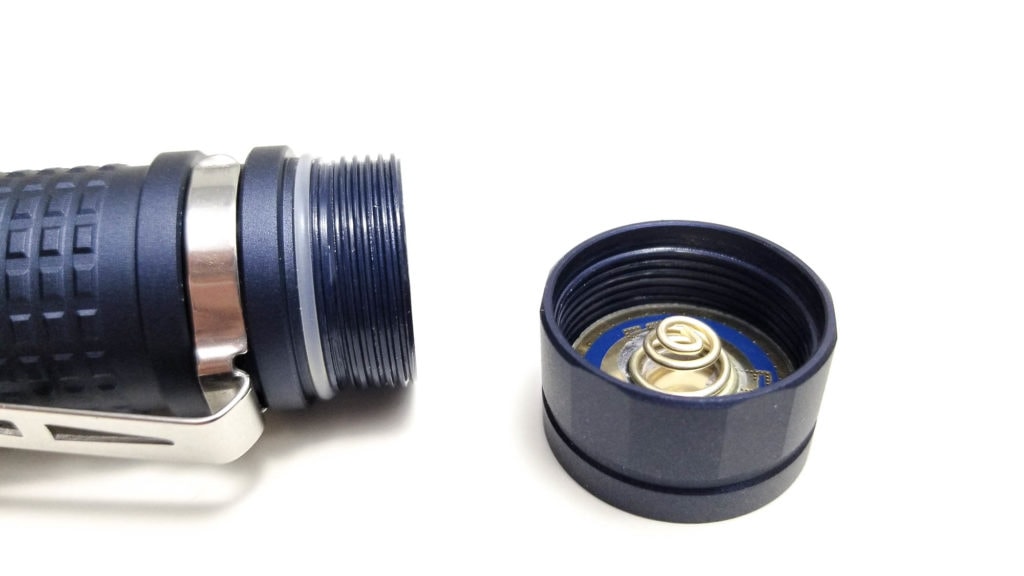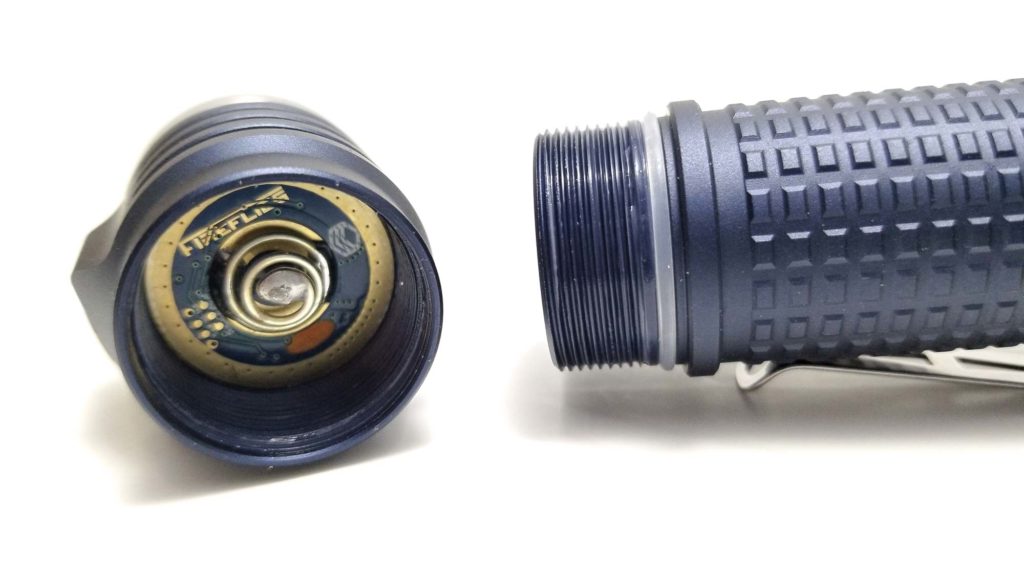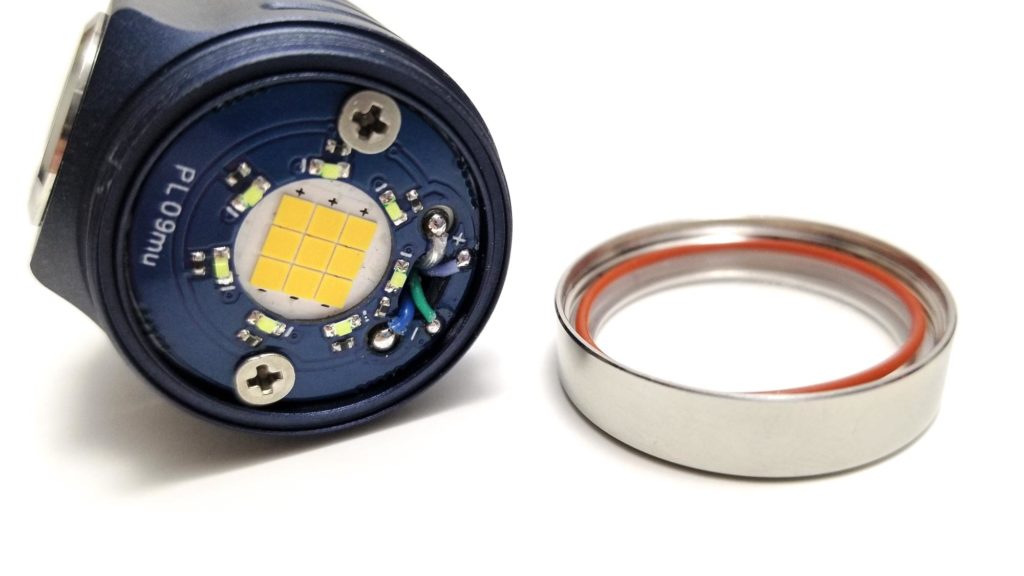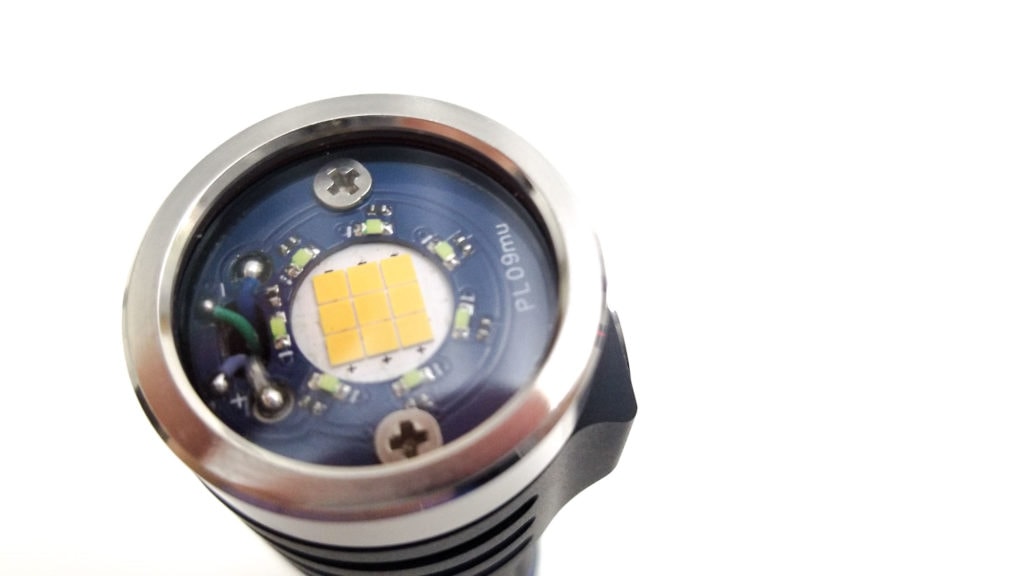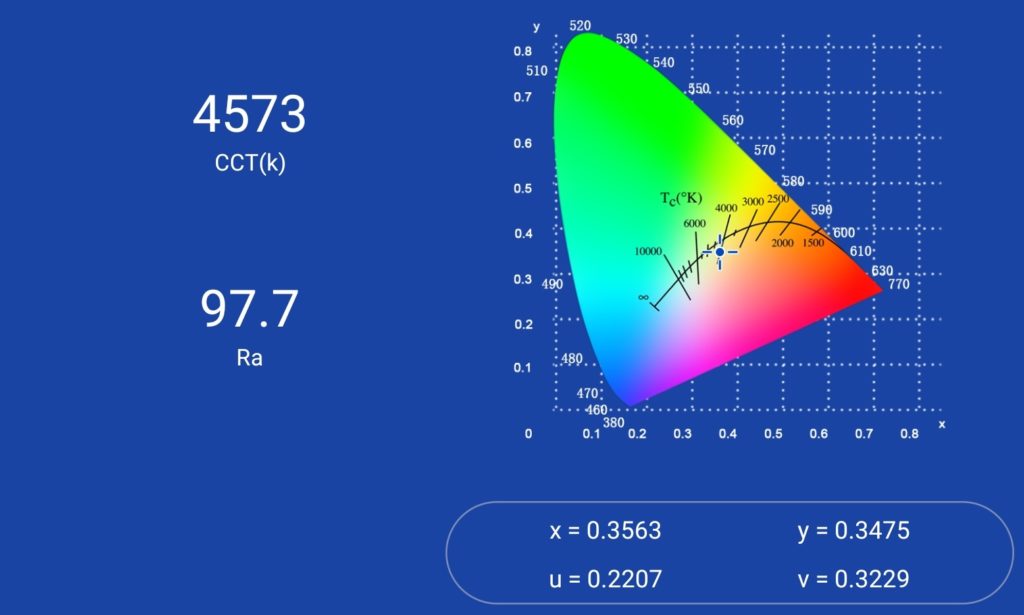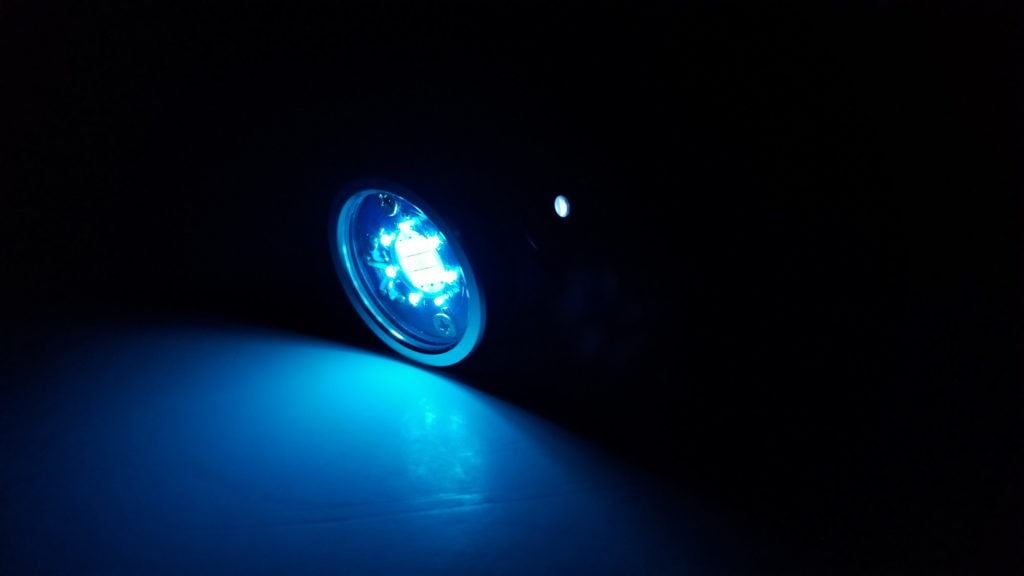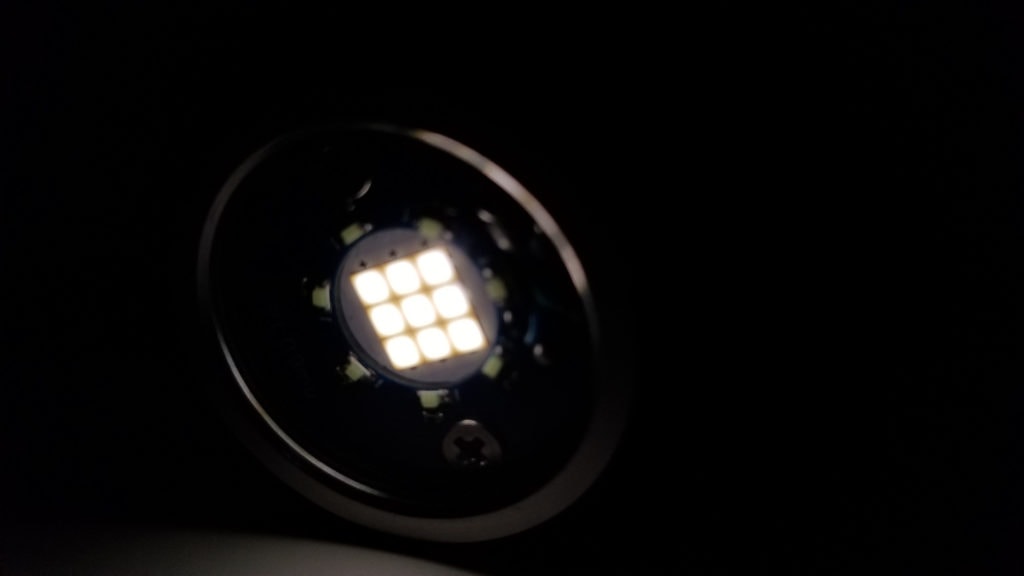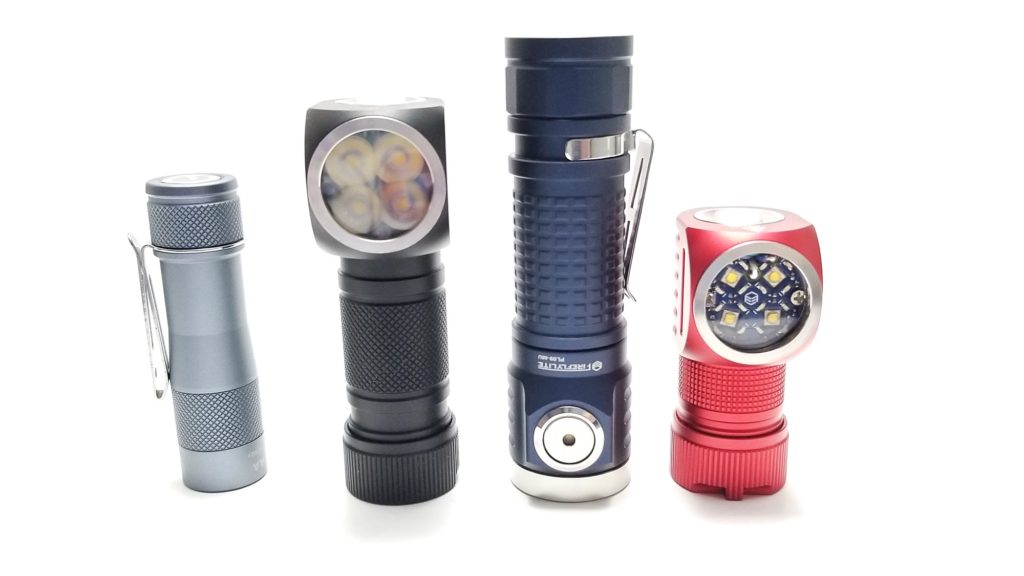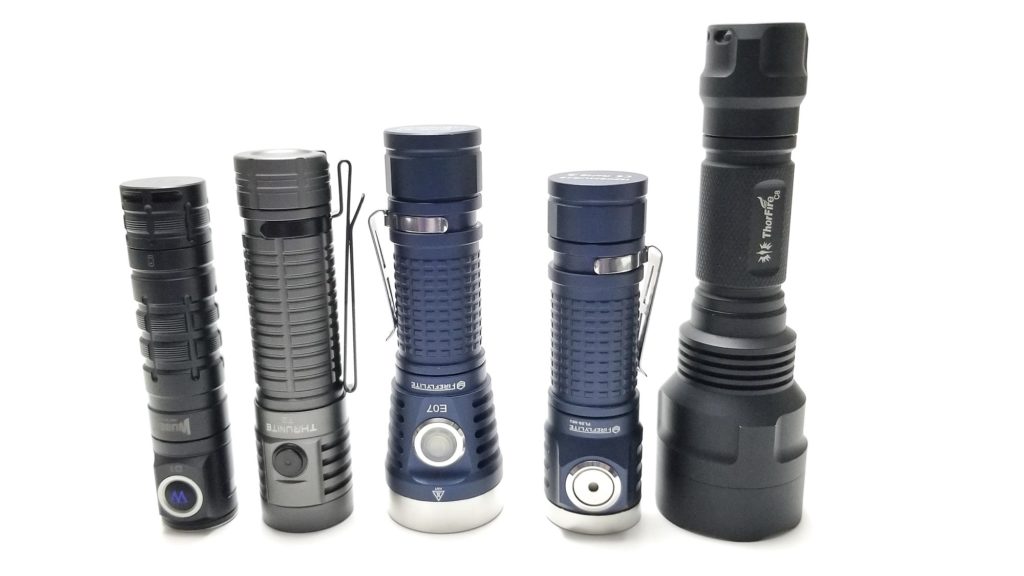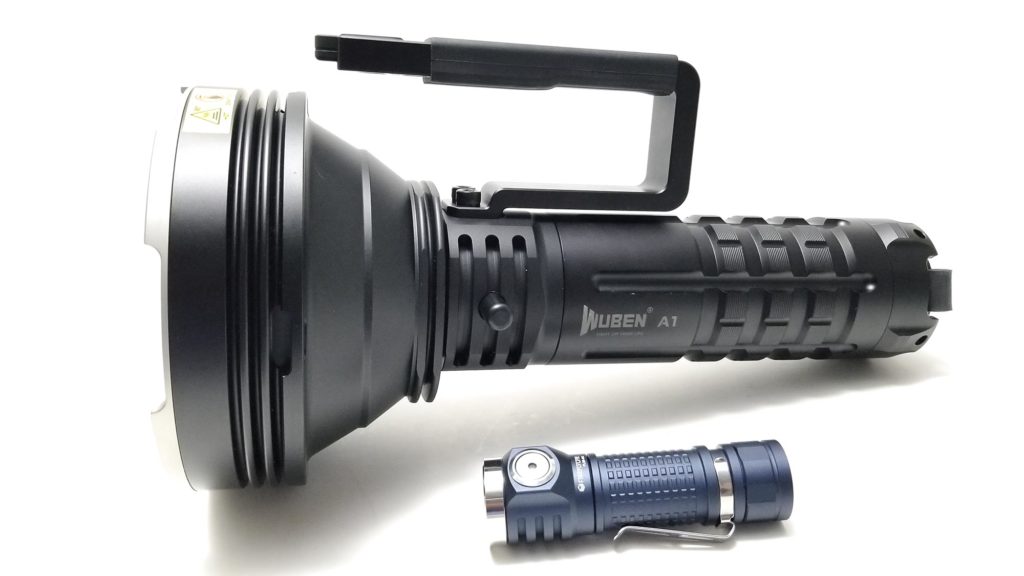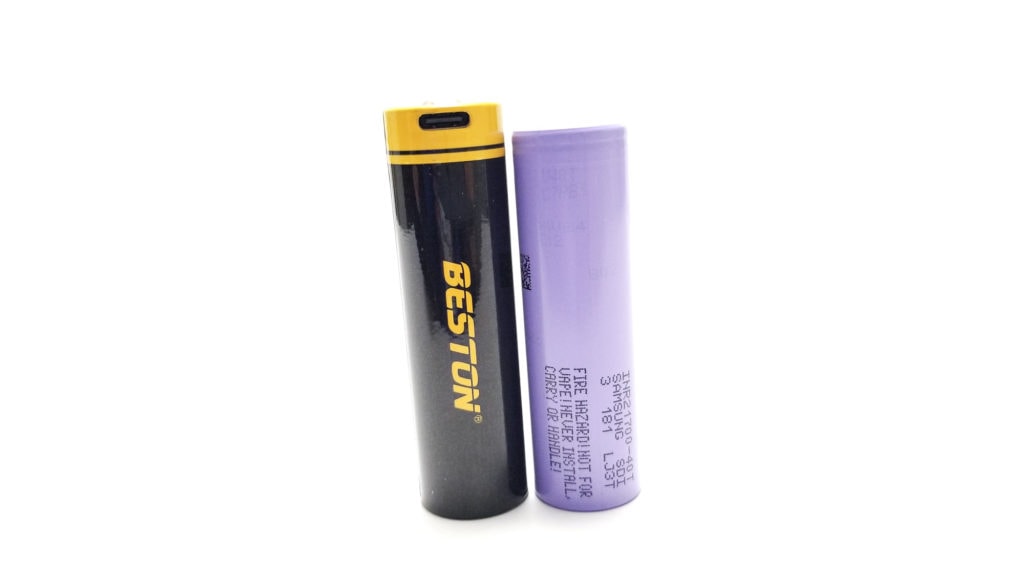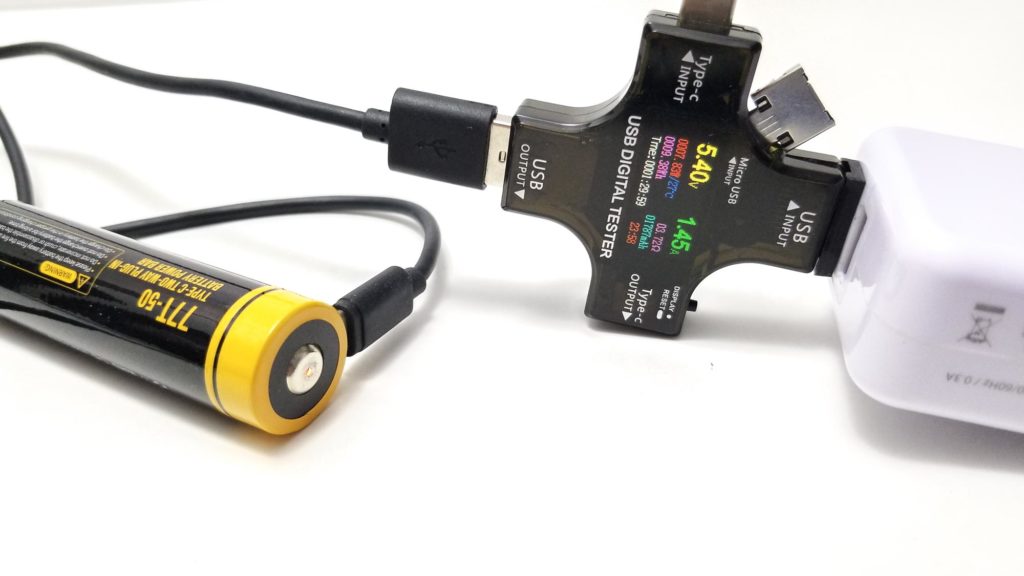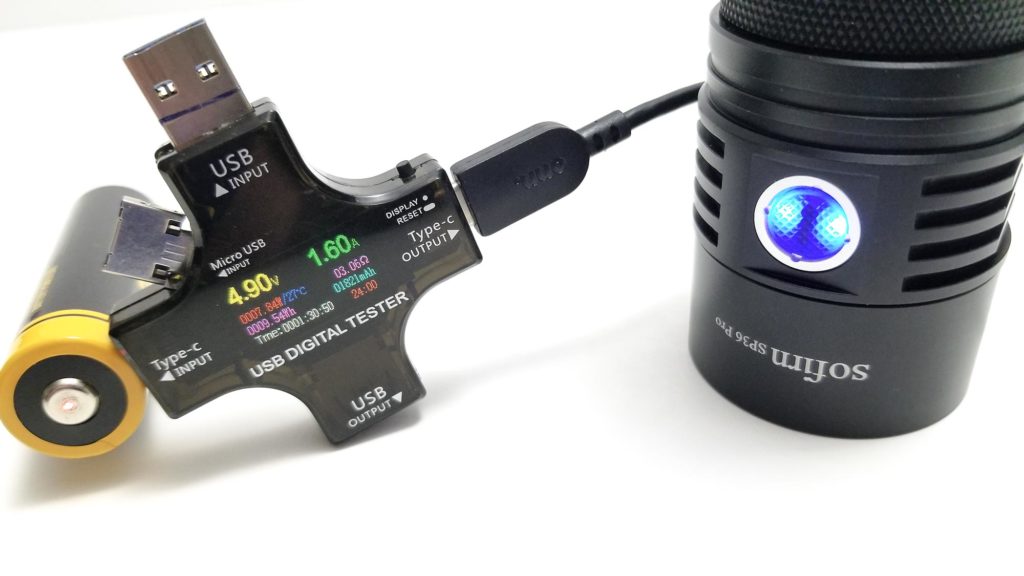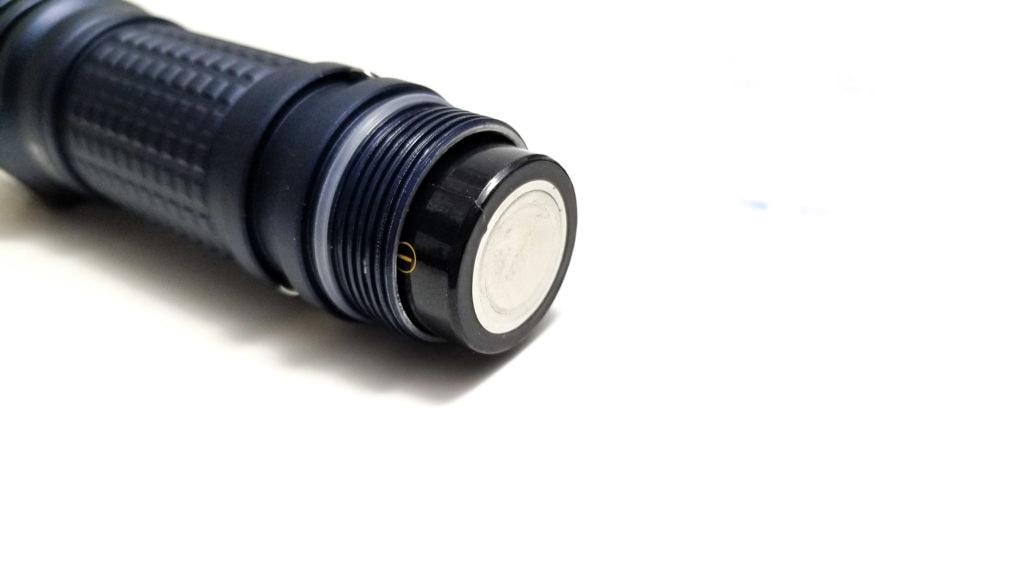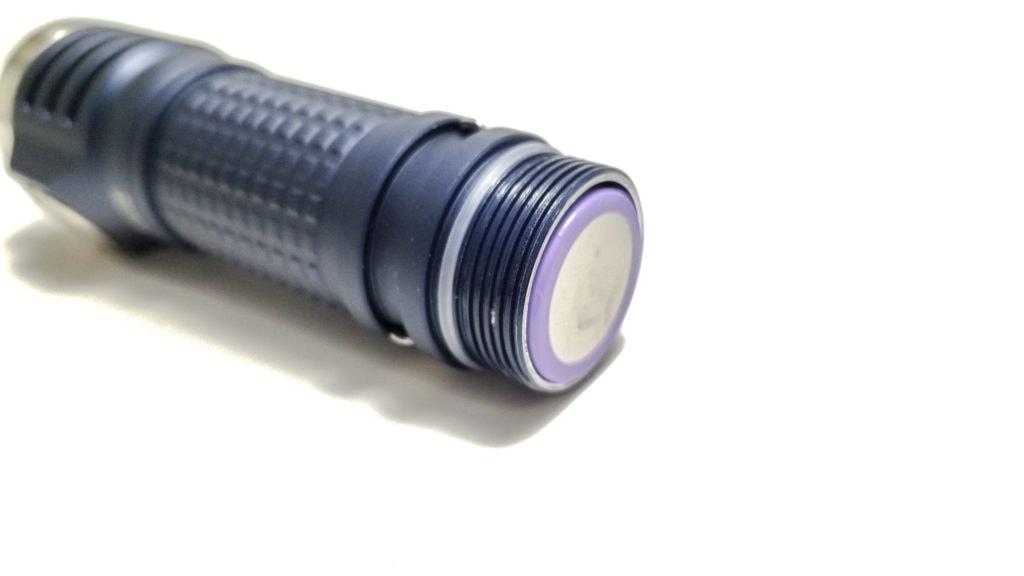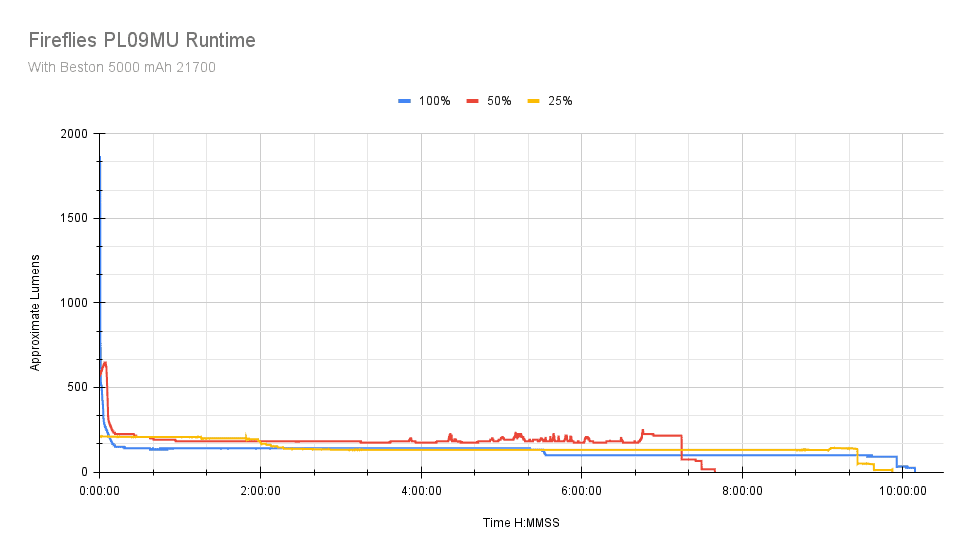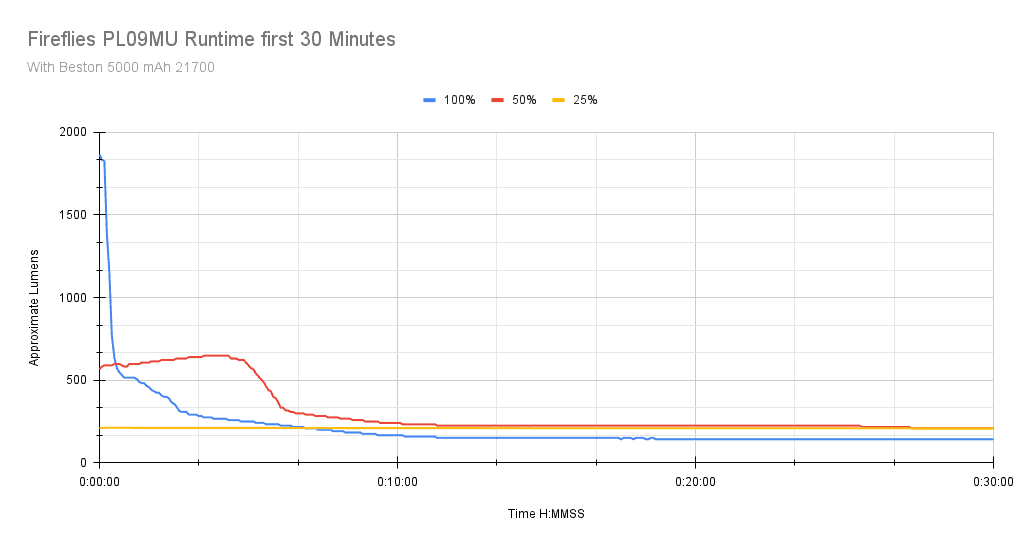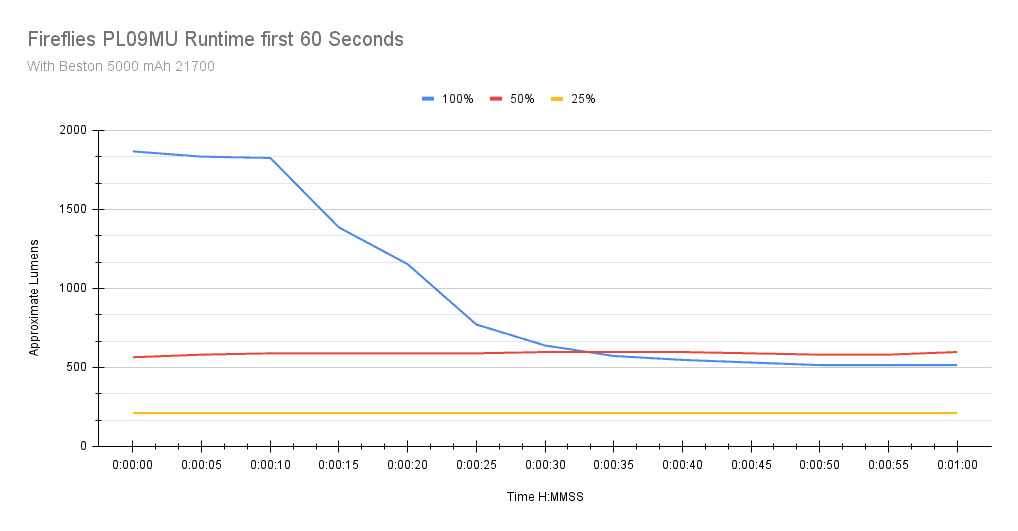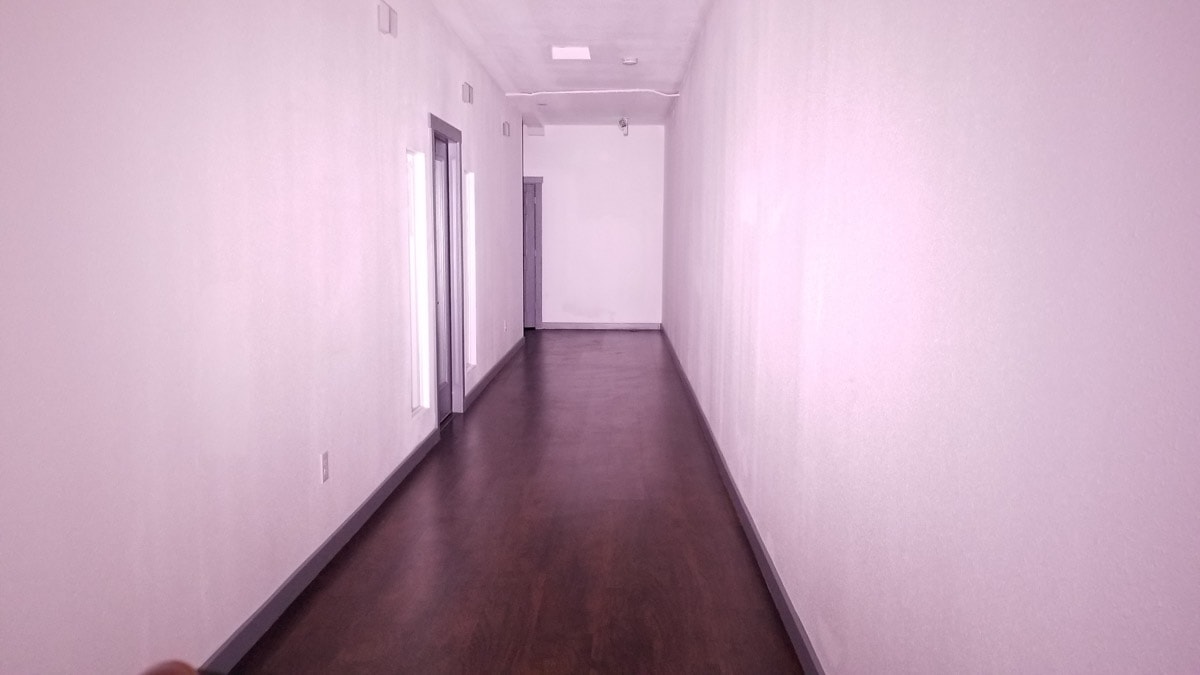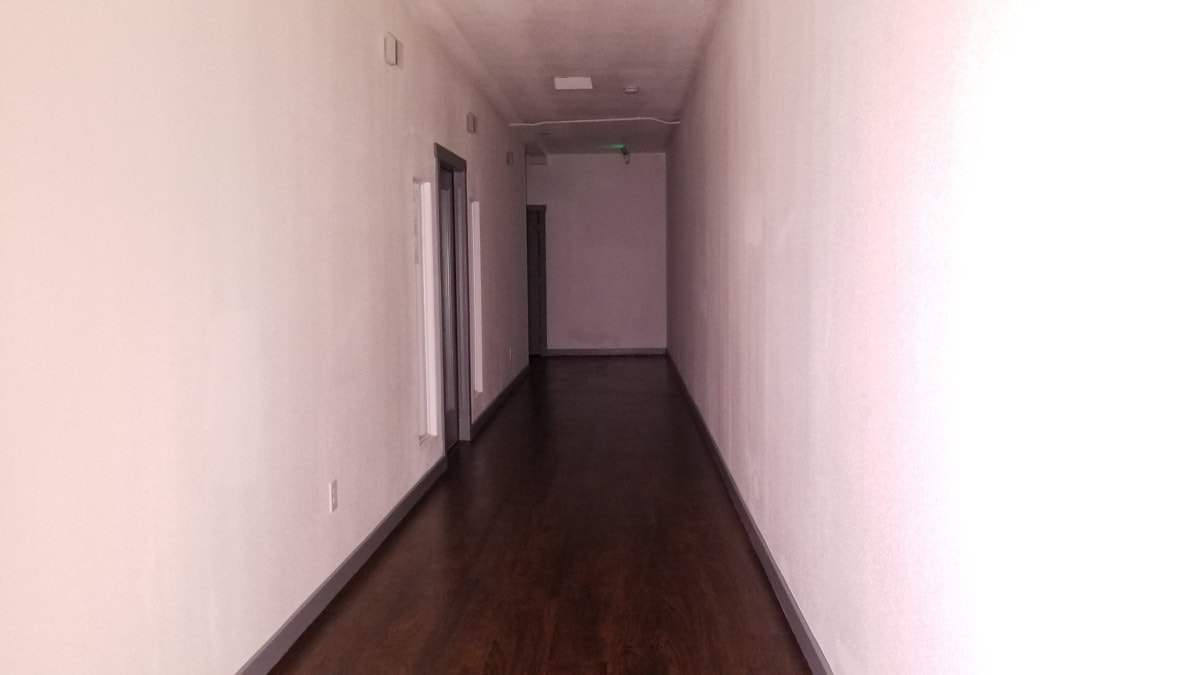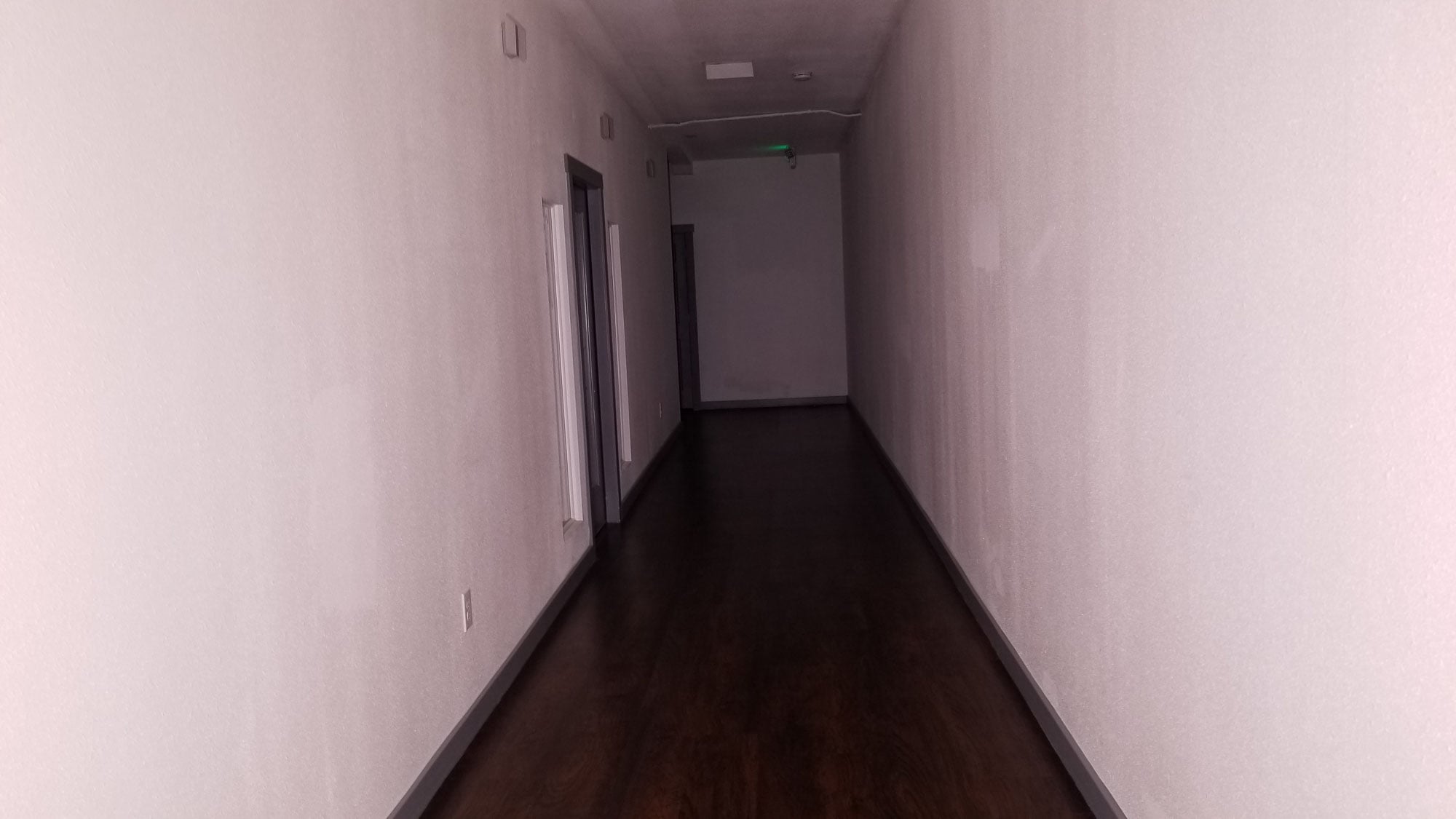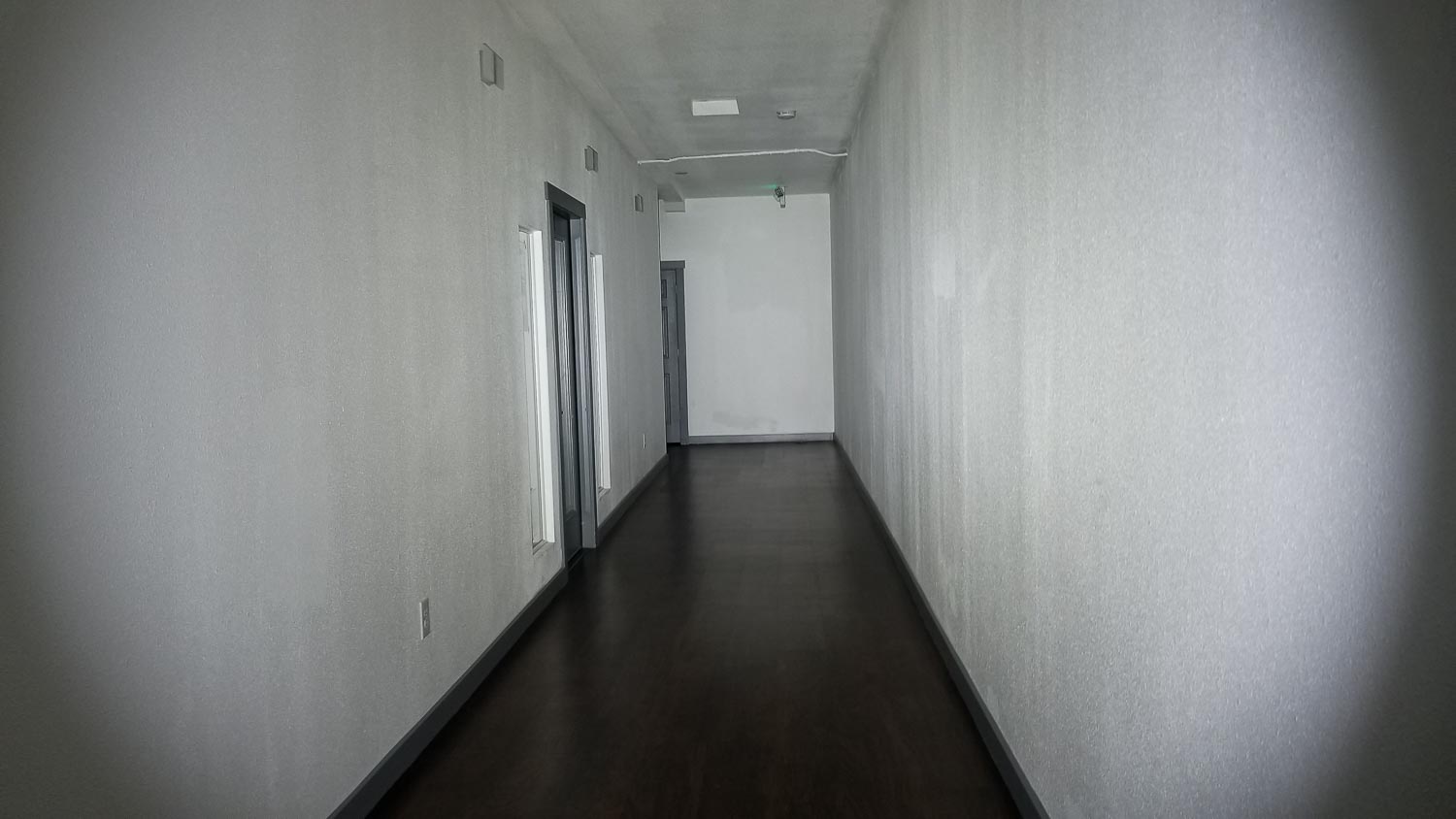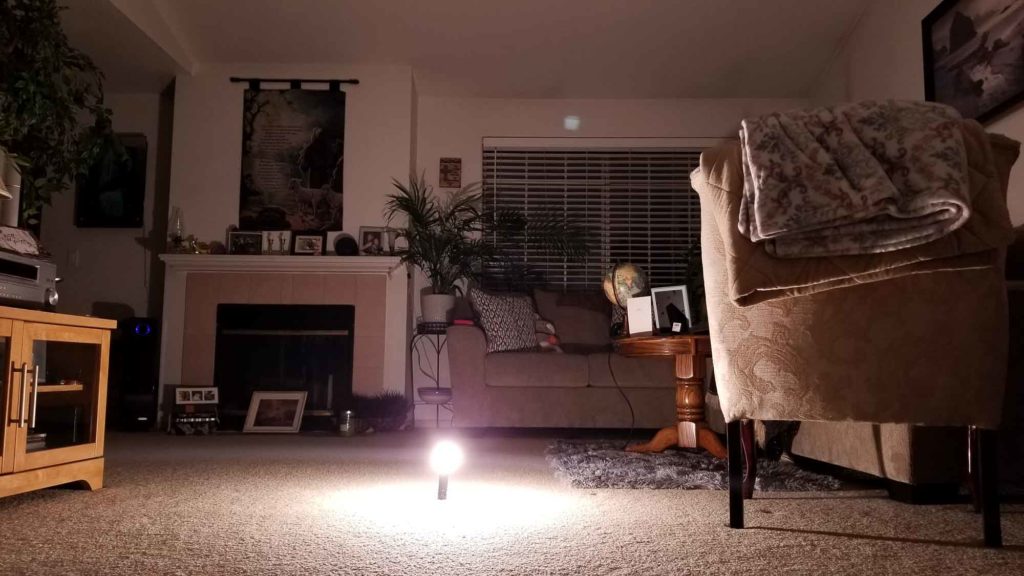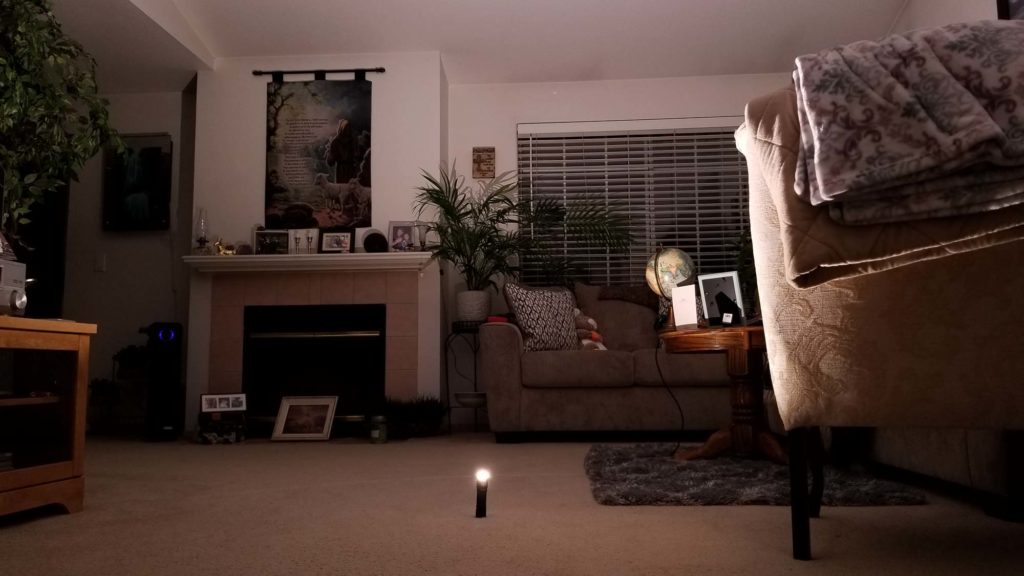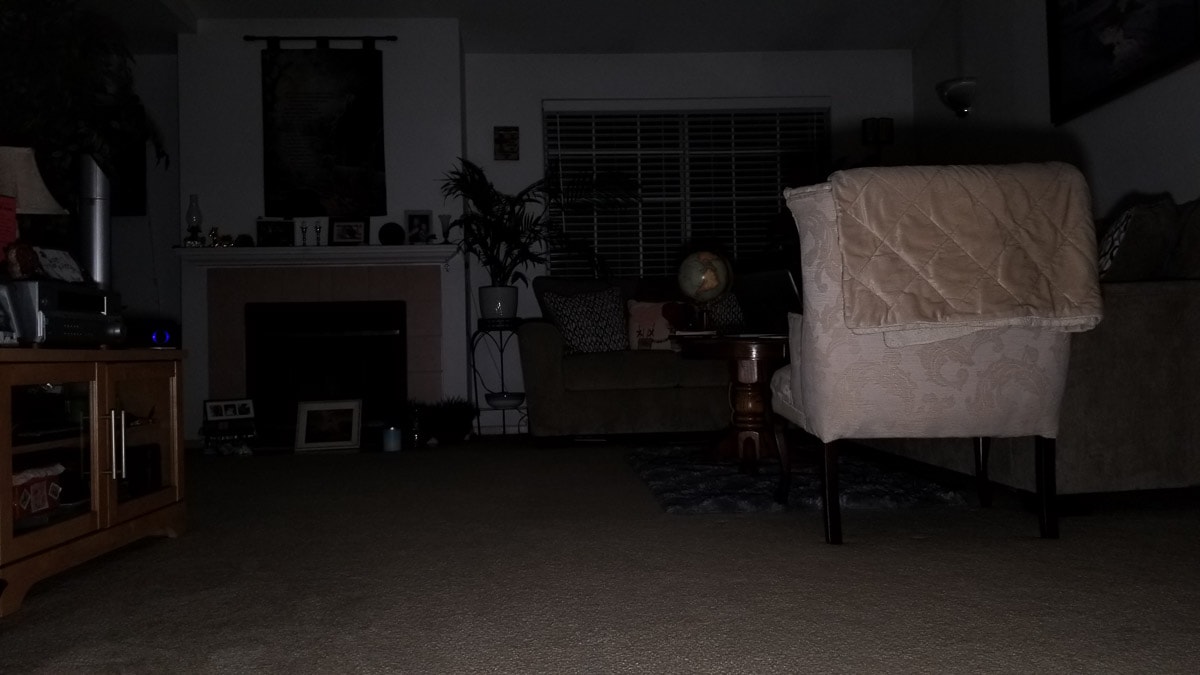1lumen selects and reviews products personally. We may earn affiliate commissions through our links, which help support our testing.
Fireflies PL09MU review: EDC flashlight test
Fireflies PL09MU specifications
| Brand/model | Fireflies PL09mu |
|---|---|
| Category | EDC flashlight |
| LED | 9*Nichia E21A |
| Max. Lumens | 2,200 lm |
| Max. Beam intensity / distance | ? |
| Battery config. | 1*21700 or 22430 |
| Onboard charging | N/A |
| Modes | Many-custom UI |
| Blinkies | Strobe/SOS |
| Reflector | None |
| Waterproof | IPX8 |
| Review date | June 2022 |
Introduction:
Fireflies is a familiar face here at 1Lumen for good reason. They are an enthusiast-oriented brand with an impressive lineup of great flashlights. Although they experienced some quality issues over the years, their lights feature the best of the best enthusiast user interfaces and LEDs available. Ultra high CRI and pristine tints? Yep. Anduril and Anduril 2? Check. Recently, they launched the excellent E12R, T9R, NOV-Mu mule, and the fantastic E07X Pro, each with the fantastic Lume1 driver and Anduril 2 UI with onboard charging. Sadly, those were short-lived, relegated to perpetual backorder purgatory due to component and material shortages.
Needless to say, this left Fireflies with a big hole in their product line, with nothing to fill it besides their aging inventory. With no new flashlights to sell, they polished up the aging E07, PL47G2 (added a mule version too), and in late 2021, they released a smaller version of the NOV-Mu, the PL09MU. This downsized version omits the Lume1 driver, onboard charging, and clips some LEDs, but retains the familiar form factor and LED configuration. Fireflies sent one out to test on, so I’ll be taking a look at it today. On paper, it has good specs, and tint snobs can rejoice because it’s sporting the same, tinteriffic R9-binned Nichia E21As.
Package quality.
The PL09MU came in the typical uplevel Fireflies box (they call it a gift box). It’s a black box with the Fireflies logo and a specification sticker with the color and emitter type on one end of the box. Simple, but elegant. Inside, there’s a bag of accessories, and a diffuser floating around loosely. The light is sitting in foam for protection in a very tidy package. Here’s what I got:
- Fireflies PL09MU
- 5000 mAh 21700 with USB type C charging (loaded in the light)
- Lanyard
- Tailcap for the included 21700
- Diffuser
- Spare o-ring
- UI instruction card
- Pocket clip
- Magnetic tailcap with spring (for standard 21700s)
- USB type charging cable
The base model PL09MU doesn’t include a battery, the USB cable, or special tailcap listed here. You can also get it with a short body for the optional 22430 battery, and if you get the optional battery, it comes with the special tailcap. It’s not a bad deal at $15. The standard accessories are decent, but once again, Fireflies threw in their bargain basement ends-melted-together lanyard. Sigh. It is nice to see a diffuser though, and it looks like a bendy lampshade.
Flashlight in use
The PL09MU is a mule meant for area lighting, photography, or as a worklight. Since there’s no optic or reflector to focus the light, it’s only really good for that. With the diffuser shade on, you can use it like a bedside light or a candle for power outages, and it adds a lot of usefulness. The battery tube is identical to the E07 2021 I tested a while back, with the grippy hand-grenade texture on the battery tube. 21700 lights are some of the best-handling lights around due to their size, and the fact that it would fit just about any size hand out there. It’s very lightweight and the neutral balance makes handling very easy. There’s a single e-switch on the head, and it’s similar to the ones on the NOV-Mu and E07X lights with a metal switch cover and a stainless bezel. There’s a single white LED indicator (which can be switched off) in the middle. It’s not grippy like a rubber switch, and the action is pretty low with zero stick out, which is good for avoiding accidental activation. I had no trouble finding the switch in the dark either. I pocket carried this light, and it never came on unintentionally. The feel is a bit vague, with soft clicks and not much feedback. Not the greatest switch ever and I much prefer the ones on the E07 2021 and PL47 lights.
For retention, there’s a detachable pocket clip, but man is it tough to get on! I had to bend the opening a bit to get it to fit without risking damage to the anodizing, but once it was on, it was very secure. My kit came with the optional tailcap for the rechargeable 21700, and there’s no lanyard hole in this one, but the standard tailcap has one. The included lanyard’s quick release clip fit it nicely without binding. The stock tailcap also has a pretty stout magnet, and it easily held the light at a 90-degree angle. Tail standing is also easy-peasy, which is mission critical for a light like this.
Build Quality, and Warranty
Fireflies has had a bit of a bad rap with quality issues. There were reports of lights shipped with used parts and missing thermal paste. The only quality issues I’ve encountered were with the E07 2021 I tested where the tailcap was a darker shade of blue, and some iffy threads on one of the PL47G2s. I did run into a quality issue on this light though: There’s an o-ring under the lens that fits against the flashlight body. When I took the bezel off, I couldn’t get it to fit right, and screwing down the bezel caused the o-ring to squirt out of the groove on the head. I gave up and omitted the o-ring, but the bezel still doesn’t fit right even when tightened down. Price? $65 US gets you the light, and adding a USB rechargeable battery with the special tailcap adds $15. As configured my test light comes in at $80 and that’s a bit steep.
Other than that, the light is very nicely milled from 6061 aluminum (instead of 6063 like the E07-probably cheaper and easier to get). The machining is nicely done, without any blemishes or tool marks, and the edges are nicely chamfered and blended and I didn’t notice any sharp edges on the light. The finish is a very nicely matte type III HA anodizing, and you can get the PL09 in navy blue or red. My sample came in navy blue, same as the E07 I tested, and I really like it. The finish is a bit more even on this light, but the tailcap was still ever so slightly off color from the rest of the light. The threads at the front of the battery tube are triangular cut, fully anodized and pretty sturdy. They’re also loonnggg, and took 8-¼ turns to fully tighten the head to the battery tube. The rears are sturdy rectangular cut and also fully anodized and were nicely lubed. The fronts were pretty dry though, but still smooth. I added some SuperLube to them both though for good measure.
For springs, depending on the tailcap you use, you get high current beCu alloy springs for the driver side (which was also bypassed), and the standard tailcap. The optional tailcap had no spring or spring PCB to make up for the added length of the USB rechargeable battery. There are decent sized o-rings sealing the front, rear, bezel, and lens, and with no external charge port, this is good for an IPX8 rating.
Warranty? Pretty straightforward, so take it away Fireflies! We provide 3 years’ manufactory warranty to fireflies flashlights. (Consumable batteries are not in warranty. ) DOA products can be returned and refunded within 15 days, We will bear all the returning shipping cost.
LED, Lens, Bezel, Beam, and Reflector
The PL09MU is a mule and these flashlights don’t have reflectors or optics. The LEDs are carried over from the NOV-Mu the Nichia E21A. These are larger version of the E17A with a 2.1 x 2.1 mm footprint, so a bit smaller than an Osram W1 or W2. It’s been around since about 2016? and is a domeless, CSP configuration that has a very slim profile at only 0.34 mm tall. Although it looks like a homogenous die, the actual LES is smaller than the footprint. The LED has a pretty low Vf, and the electrical layout is also interesting and needs a special MCPCB to mount one of these correctly. With no thermal pad, they’re also low-power LEDs, rated at 5W or so with a max drive current of 1400-2000 mA. Don’t expect high output, but what you do get is exquisite tint and color rendering, especially with the R9080 version. The PL90MU has 9 of these LEDs grouped in a 3 x 3 layout on a single MCPCB and the reflow looks really tidy. Like other Fireflies lights, you can get the PL09 with 3 emitter configurations:
- The R9080 4500K
- R9050 SM2050 2000K
- 50/50 mix of both for 3800K
My sample came as requested with the R9080 4500K variety. Now, I usually don’t care too much about tint or CRI, but I gotta say this makes some of the best looking light I’ve come across. It’s even better than the FA4 SST20s that came with the PL47MU I tested. The Opple Lightmaster agrees, with the tint coming in at 4573K and 97.7 RA with a duv of -0.0046. The tint distribution is excellent, with no shift and no anomalies in the beam. It’s just a broadcast of beautiful neutral white light in a very wide pattern. This isn’t a thrower, so it’s only good for about 50 meters on the darkest of nights. For indoors or short distances, it’s about perfect. I wish someone made an automotive worklight with these LEDs, since it would help a lot with finding leaks!
Dimensions and size comparison
Length:
- Length: 105 mm / 4.13 inches
- Head diameter: 30 mm / 1.18 inches
- Body diameter: 26 mm / 1.02 inches
Weight:
- With included USB rechargeable 21700: 153.35 g. / 5.48 oz.
- Without battery: 83.4 g. / 2.94 oz.
Flashlight size comparison with its competition
I compared the PL09MU to some other large lights:
Group 1 left to right EDC flashlights: Lumintop FWAA, Fireflies PL47G2 2021, Fireflies PL09MU, Fireflies PL47G2-Mu
Group 2 left to right: Wuben D1, Thrunite T2, Fireflies E07 2021, Thorfire C8
Group 3: Wuben A1, Fireflies PL09MU (couldn’t resist!)
Driver & User Interface:
I can’t confirm the driver type, but Fireflies says it has “digital current regulation on lower brightness” so that probably means there’s a 7135 regulator in there (or two, or three?). While not truly fully regulated, it’s a compromise nonetheless.
The UI is interesting. I don’t usually read the user manual for lights, but sometimes I do. When I picked up the PL09MU and clicked it on, it felt like and behaved like Anduril. Smooth and stepped ramping, batt check, aux LED control…until I tried to get into the configuration menu. Iit wasn’t there. Special blinkies? No thermal configuration? Hmmm. It seems like Fireflies flashed this light with a bifurcated version of Anduril. It kept the good things about it that I (and I’m sure others would appreciate), but omitted things that others might really miss from the full firmware (like the configurability). Here’s what’s left:
Available modes:
- Smooth and stepped ramping. Stepped modes: 1%, 15%, 25%, 50%, 100% (Turbo)
From OFF:
- Single click: Turns on in last brightness setting
- Double click: Turbo
- Triple click: Batt check
- Quad click: Electronic lockout (when in lockout, press and hold for a 1% output)
- 2 clicks and hold: Strobe. Double click again for S.O.S
From ON:
- Single click: Turns off
- Long press in smooth ramp mode: Ramps up or down
- Long press in stepped ramp mode: Cycles through the stepped modes
- Double click: Turbo/100%
- Triple click: Switches between smooth and stepped ramping
Mode memory
- Memorizes the last used mode/brightness
Shortcuts:
- Double click for 100%/Turbo
Low voltage warning:
- Yes. Brightness ramps down to a very low level and eventually shuts off (like Anduril)
Strobe/blinkies
- Strobe, S.O.S
Lock-out mode:
- Yes, electronic lockout accessed by 4 clicks from off. The light will blink twice. The aux LEDs remain lit, and when the switch is pressed the light turns on at 1%. Repeat to unlock. The light will blink once to acknowledge.
PWM
- None at 1% brightness, but very fast PWM in other modes/brightness like regular Anduril.
Aux LEDs
- The AUX LEDs can be configured for low brightness, high brightness, off, or blinking by clicking the switch 7 times from off. Repeat to switch between states.
Additional info on the UI:
- The UI is a weird hybrid of Anduril, almost like the Fireflies engineers got bored one night and decided to spin off Anduril into something more user-friendly. I like this though as it eliminates a couple pain points with Anduril/Anduril 2 though. I own several Anduril lights, and this is a nice compromise because it retains the useful features I love like the ramping, nice mode spacing, batt check, and removes some annoying features of Anduril (and ones I never use) while maintaining 90% of the functionality. The thermal limit isn’t adjustable though, and neither is the ambient temp sensor. I did notice brightness adjustment on Turbo after about 45 seconds, but the runtime test will disclose whether that’s a timed step down or thermal regulation.
Batteries & Charging
The PL09MU borrows the E07s battery tube, so naturally it’s a 21700 light. My sample came with a strange “Beston” branded 21700 with USB type C charging that looks strikingly similar to the 5 Ah 21700s Fenix and Cyansky bundle with their lights. Maybe they’re the same under the wrap? It also features a power bank function and protection circuit, and there’s a tiny hole in the positive button top contact with an indicator LED underneath for charge status. It’s red for charging and blue for charged. The charging current is supposed to be 2 amps, and I’m getting about 1.6 amps per my USB tester, so plan on about 3.5 hours for a fully charged battery.
I popped it in my Vapcell S4+ and it’s a tight squeeze. Internal resistance is about 25 milliohms, so similar to a Samsung 50E2, and it should be able to feed the array of E21As just fine. You can use other 21700’s in the PL09MU, but you must use the standard tailcap with the spring. My button top Epoch 50Gs worked, as did flat top 21700s. There’s no onboard charging though, so if you opt not to get the battery bundle, you’ll need a li-ion charger for 21700s.
Performance test
Lumen measurements (for each mode)
Lumens are measured using my 30 cm homemade integrating sphere. I use a Digi-Sense 20250-00 datalogging luxmeter and the sphere has been calibrated using many lights of known output including a Makkua calibrated S2+. I used the included 21700 battery and stepped modes. All readings taken at 30 seconds. Amps were measured using my RadioShack T-RMS multimeter with 16 gauge wires inserted in the meter. Readings over 8 amps measured with my FY219 clamp meter.
| Mode | Amps at start | Specs | @turn on | 30 sec | 10 minutes |
|---|---|---|---|---|---|
| 1% | 20 mA | ? | N/A | N/A | N/A |
| 5% | 66 mA | ? | 21 | 21 lm | – |
| 25% | 624 mA | ? | 211 lm | 211 lm | 209 lm |
| 50% | 2.1 A | ? | 564 lm | 598 lm | 241 lm |
| 100% (Turbo) | 8.90 A | 2200 lm | 1868 lm | 639 lm | 166 lm |
I tried a 30T in it and hit 14 amps at turn on, but the drop in output around the 30 second mark was still dramatic. The 1% mode really is 1%. It’s so low my sphere can’t pick it up, so it’s definitely under 1 Lumen. Great for nighttime reading with the diffuser on.
Parasitic drain:
- 1.2 µA
Runtime graph
I tested the runtimes in the 30 cm integrating sphere using the Digi-Sense 20250-00 datalogging luxmeter. The sphere has been calibrated with many lights of known output, including a Makkua-calibrated S2+. I tested 25%, 50%, and 100% (Turbo) modes using the fully charged included battery..
100% started a hair under 1900 Lumens, and down from Fireflies advertised. Still, a decent output but coming in a fair bit lower than the PL47G2-MU. The output dropped sharply at the 30 second mark, so probably a timed step down. By 1 minute in, it’s down to 500 Lumens, and it’s under 400 Lumens by 2 minutes 30 seconds. You can reactivate Turbo at will though. Temps didn’t rise too much, and were never over 50 C. By 20 minutes in, the output is under 150 Lumens, and holds that for the next 5 hours, down to 100 Lumens for another couple hours, finally dropping down to a very low level (like Anduril) by 10 hours in and I ended the test. Total runtime was 10 hours 8 minutes.
The 50% mode started at about 550 Lumens, and slightly increased up to 647 Lumens by 4 minutes in, then declined over the next 10 minutes to 224 Lumens. The output slowly declined over the next 7 hours down to 16 Lumens by 7 hours 20 minutes, and I ended the test at 7 hours 39 minutes. Heat was never an issue with temps never cresting 40 C the entire runtime.
25% was uneventful, and somewhat regulated. Starting at a hair over 200 Lumens and holding better than 130 Lumens for 9 hours 26 minutes. The output dropped very low at 9 hours 38 minutes and I ended the test at 9 hours 52 minutes. I don’t think there’s a linear regulator like a 7135 handling the regulation though, It’s most likely running off a FET like the other modes.
This runtime is nothing special. It’s a typical cheap FET driver regulated by PWM, a far cry from the excellent Lume1 driver that’s MIA, but it works fine. The LVP works like Anduril, with a deep step down when the cell hits around 3 volts under load. The cell consistently read 2.9 volts after each test.
Throw numbers:
Throw was measured using the Uni-T 383S luxmeter at 5 meters indoors. Readings taken at 30 seconds using the included fully charged battery. No readings at 5 meters for the first two modes, but the others are about what I expected from a mule.
| Mode | Specs | Candela measured | Meters | Yards |
|---|---|---|---|---|
| 1% | ? | N/A | N/A | N/A |
| 15% | ? | N/A | N/A | N/A |
| 25% | ? | 100 cd | 20 | 21.87 |
| 50% | ? | 500 cd | 44.72 | 48.9 |
| 100% (Turbo) | ? | 525 cd (1500 cd at start) | 45.8 (77.45 at start) | 50 (84.7 at start) |
Extra info: Peak beam distance according to ANSI FL1 standards: The calculated value of distance in meters at which the flashlight produce a light intensity of 0.25 lux. (0.25 lux is about the brightness of a full moon shining on an object).
Beamshots
I compared the PL09MU to its right-angle counterpart PL47G2-MU, optic-equipped PL47G2, Wuben F5, and the ultra-floody Wuben D1.
The end of the hallway is about 12 meters away. I threw in a Sofirn SP10v3 for comparison to a small flashlight.
Indoors, you can see how well the PL09MU spreads the light around, and the oh-so nice tint! It looks as good, if not even better than the really nice FA4 SST20s of the PL47G2 and G2 mule.
Disclaimer: This flashlight was sent to me for review at no cost by FireFlies. I have not been paid to review, nor have I been holding back on problems or defects.
Final Verdict
Pros
- Nice build quality
- Compact and light
- Amazing tint and color rendering
- Easy to handle
- Pretty bright
- Simple Anduril-like UI
- Nice mule beam pattern
Cons
- No Anduril
- No onboard charging
- Gets expensive with add-ons
- Cheap FET driver
- O-ring fitment
Explanation on star ratings:
1: Avoid: my phone flashlight would be a better choice – 2: Poor: significant defect or issues; almost unusable – 3: Average: some defects or issues; but still usable 4: Good: recommended (minor issues) – 5: Great: highly recommended
4 stars: ★★★★
Mules are interesting flashlights, and I have to keep reminding myself they’re good for things other than pulling logs out of a forest, plowing a field, or carrying heavy objects (and Clint Eastwood). Kidding aside, mules are very useful, and the ones we’re getting these days are really nice, melding all the good flashlight characteristics without a reflector or optic. The PL09MU is one example.
I like this light a lot, and it fits just about every general purpose task, and unless you need to see further than 40 meters, it’s perfect. Moreover, it does so with amazing color rendering and tint. I’m by no means a tint snob, the Nichia E21A is a perfect mule LED. It gets pretty bright and the usefulness factor is very high thanks to the included ‘lampshade’ diffuser for bedside reading or nighttime forays. The UI, while not true Anduril, is a perfectly acceptable stand-in, and Fireflies kept most of the useful bits (even aux LED control!).
Although the PL09MU doesn’t have onboard charging, the fact Fireflies compromises by including a USB rechargeable battery is appreciated (even if an extra add-on). The magnetic tailcap is also extremely handy and adds usefulness. Overall, this light doesn’t really take the place of the absentee MOV-Mu, but it’s an acceptable stand-in while we wait for it to re-stock. I wasn’t fond of the issue I had with the o-ring, it’s a bit spendy when you add options, and if it had a more efficient driver, it would be even better with higher output regulated modes. For now, I’m giving it 4 stars. Still worth a look if you’re in the market for an E21A mule.
Buy your Fireflies PL09MU here:
Get 10% off at Firefly Outdoor store, using our exclusive discount code: 1lumen
1lumen selects and reviews products personally. We may earn affiliate commissions through our links, which help support our testing.
